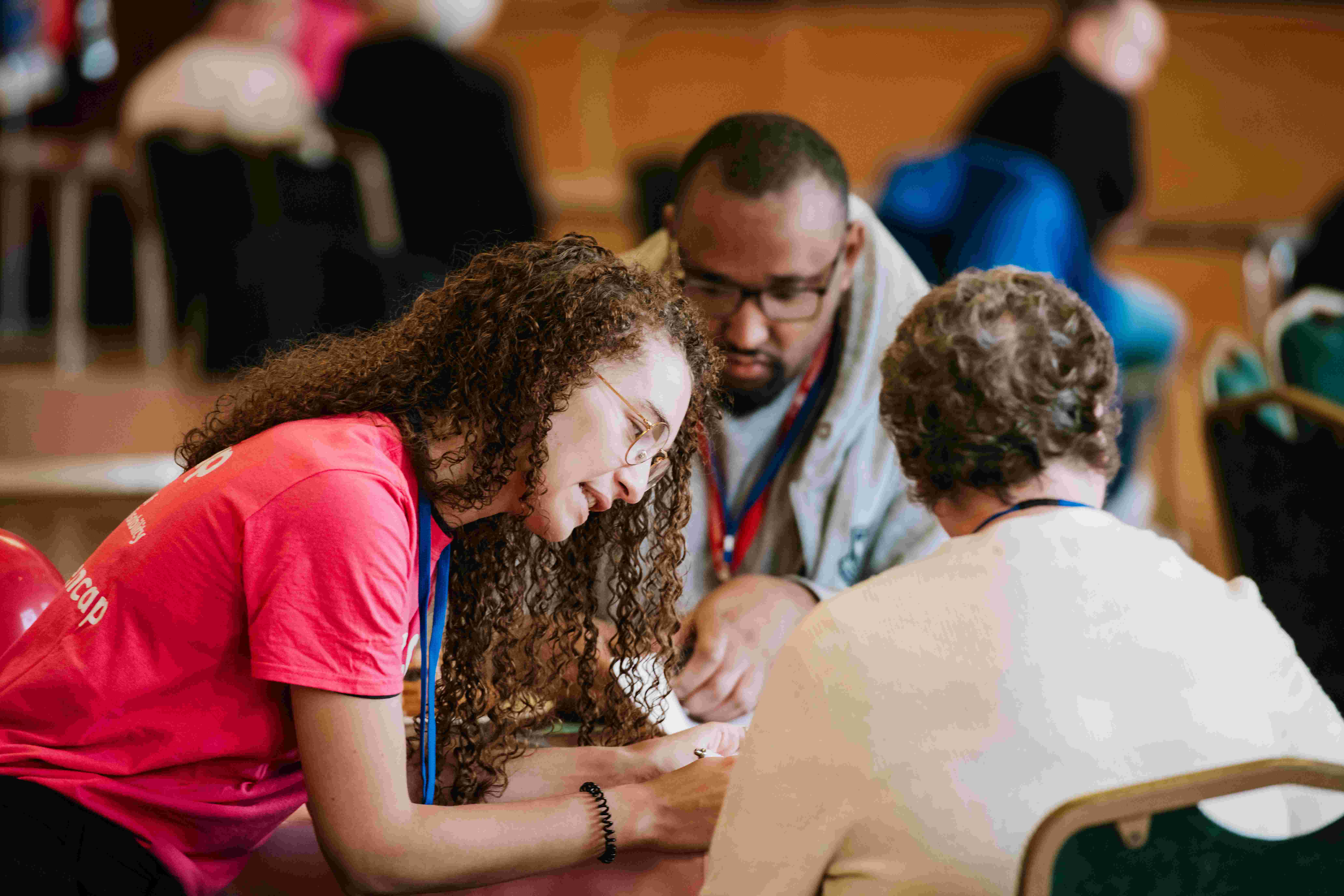What is Personal Independence Payment (PIP)?
PIP stands for Personal Independence Payment. It is a benefit to help cover the additional cost of living with disability and replaces
Disability Living Allowance
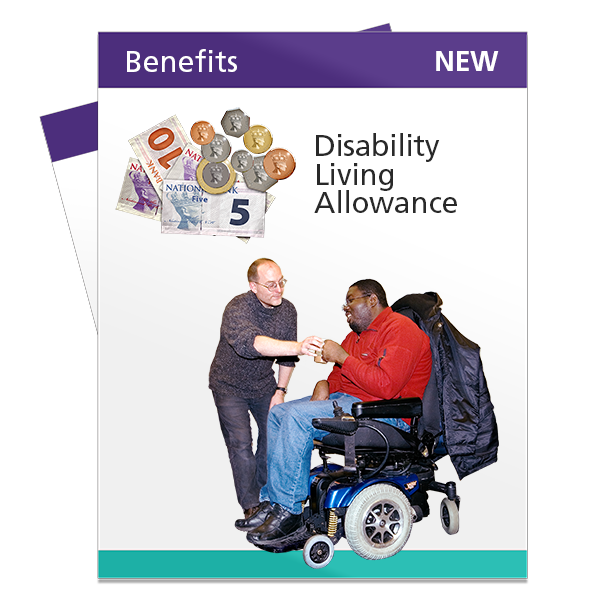 Disability Living Allowance (DLA) is the name of a benefit that some people with a disability get. The money is to pay for extra help you might need to look after yourself and to get around. Disability Living Allowance is being replaced by a benefit called
Personal Independence Payment
Disability Living Allowance (DLA) is the name of a benefit that some people with a disability get. The money is to pay for extra help you might need to look after yourself and to get around. Disability Living Allowance is being replaced by a benefit called
Personal Independence Payment
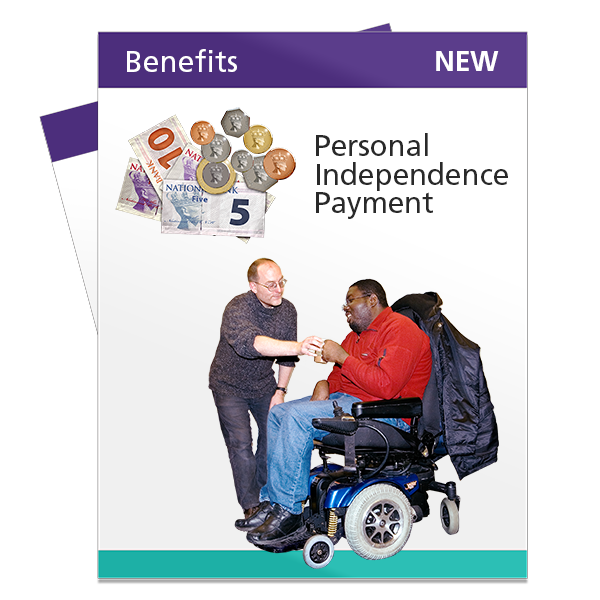 Personal
Independence
Personal
Independence
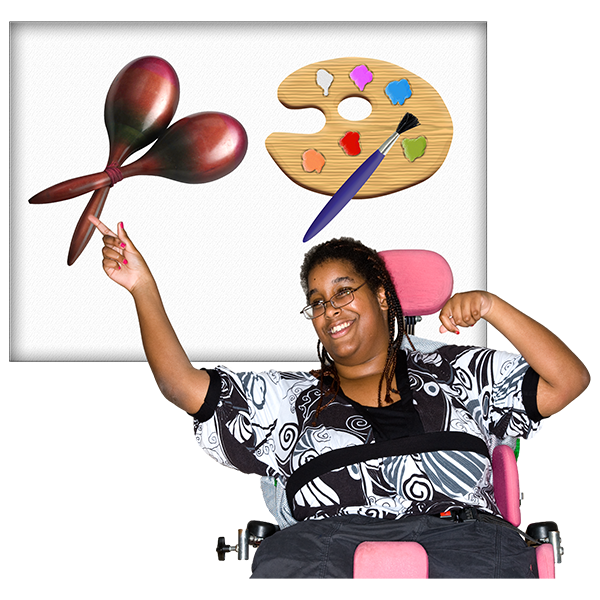 Independence means doing things on your own. Making your own choices.
Payment (PIP) is the name of a benefit that some people with a disability or health condition get. The money is to pay for extra help you might need to look after yourself and to get around. Some people who used to get Disability Living Allowance (DLA) now get PIP instead.
(PIP).
(DLA) for people aged 16 to 64.
Independence means doing things on your own. Making your own choices.
Payment (PIP) is the name of a benefit that some people with a disability or health condition get. The money is to pay for extra help you might need to look after yourself and to get around. Some people who used to get Disability Living Allowance (DLA) now get PIP instead.
(PIP).
(DLA) for people aged 16 to 64.
Eligibility for PIP is based on a points system. You get a certain number of points depending on whether you meet certain descriptors for the specified activities.
You need a minimum of 8 points to get the standard rate, and 12 points to get the enhanced rate for daily living and/or mobility.
You can find out more about PIP on our Personal Independence Payment page.
About the 'How your disability affects you' (PIP2) form
After you have contacted the
The Department for Work and Pensions
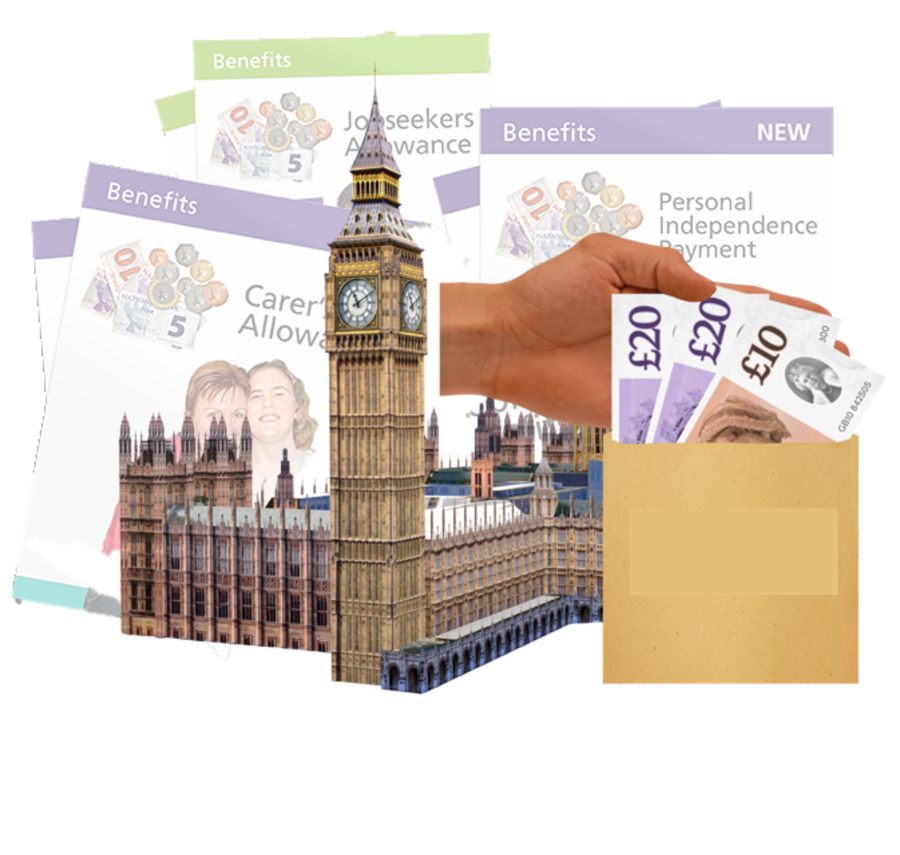 The Department for Work and Pensions is sometimes called the DWP. It is part of
the government
The Department for Work and Pensions is sometimes called the DWP. It is part of
the government
 The Government are the people who run the country. The Government decide how much tax people should pay and how things like the National Health Service (NHS) should work.
and manages payments and benefits like Universal Credit, Personal Independence Payment,
Employment
The Government are the people who run the country. The Government decide how much tax people should pay and how things like the National Health Service (NHS) should work.
and manages payments and benefits like Universal Credit, Personal Independence Payment,
Employment
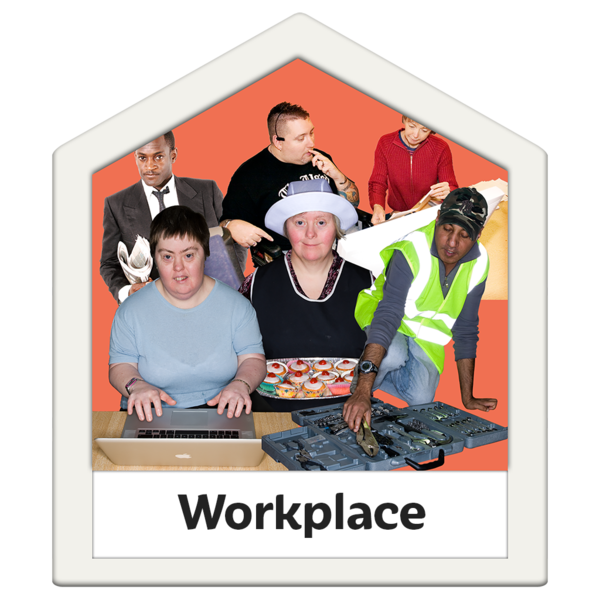 Employment means having a job.
and Support Allowance, and Income Support.
(DWP) to tell them you'd like to apply for PIP, you will be sent a 'How your disability affects you' (PIP2) form.
Employment means having a job.
and Support Allowance, and Income Support.
(DWP) to tell them you'd like to apply for PIP, you will be sent a 'How your disability affects you' (PIP2) form.
The form lets you explain how your disability affects your ability to do day to day activities.
You need to make sure that what you write on the form reflects your health conditions and the PIP criteria. It is important to provide as much evidence for your conditions as you can.
You are allowed to attach extra sheets to the form if you need more space to write. You can also attach extra sheets of paper if it is easier for you to type your answers and print them out, rather than writing on the form. However, if you do this, you should write in each box on the form that additional sheets are attached.
If you attach additional sheets to your PIP2
application form
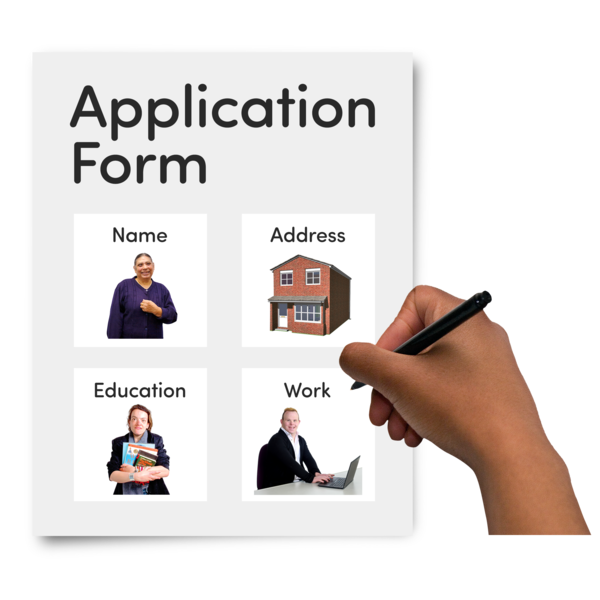 An application form is a form you have to fill in to try to get something.
, you should include your name and
national insurance
An application form is a form you have to fill in to try to get something.
, you should include your name and
national insurance
 National Insurance is a type of
tax
National Insurance is a type of
tax
 Tax is the money that pays for things like schools, hospitals and the police. There are different types of taxes like
income tax
Tax is the money that pays for things like schools, hospitals and the police. There are different types of taxes like
income tax
 Income tax is the money that is taken out of the money you earn every month. It helps to pay for things we all need like hospitals and schools.
,
VAT
Income tax is the money that is taken out of the money you earn every month. It helps to pay for things we all need like hospitals and schools.
,
VAT
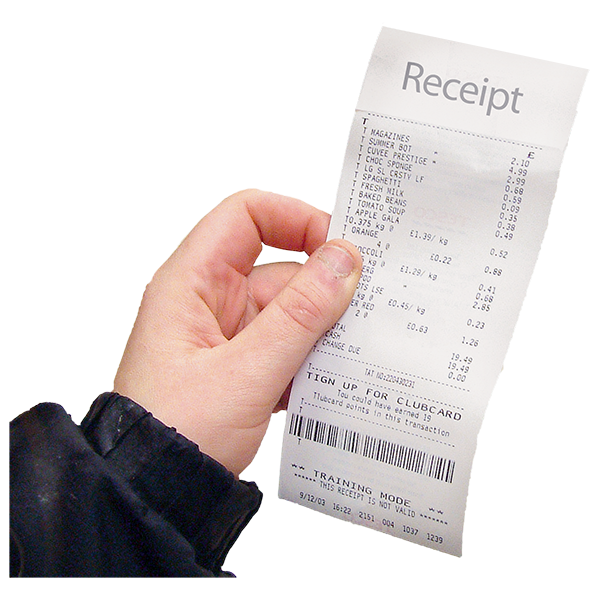 VAT is also called Value Added Tax. VAT is the extra money you pay when you buy things. The money goes to the government to pay for things like schools and hospitals.
and
council tax
VAT is also called Value Added Tax. VAT is the extra money you pay when you buy things. The money goes to the government to pay for things like schools and hospitals.
and
council tax
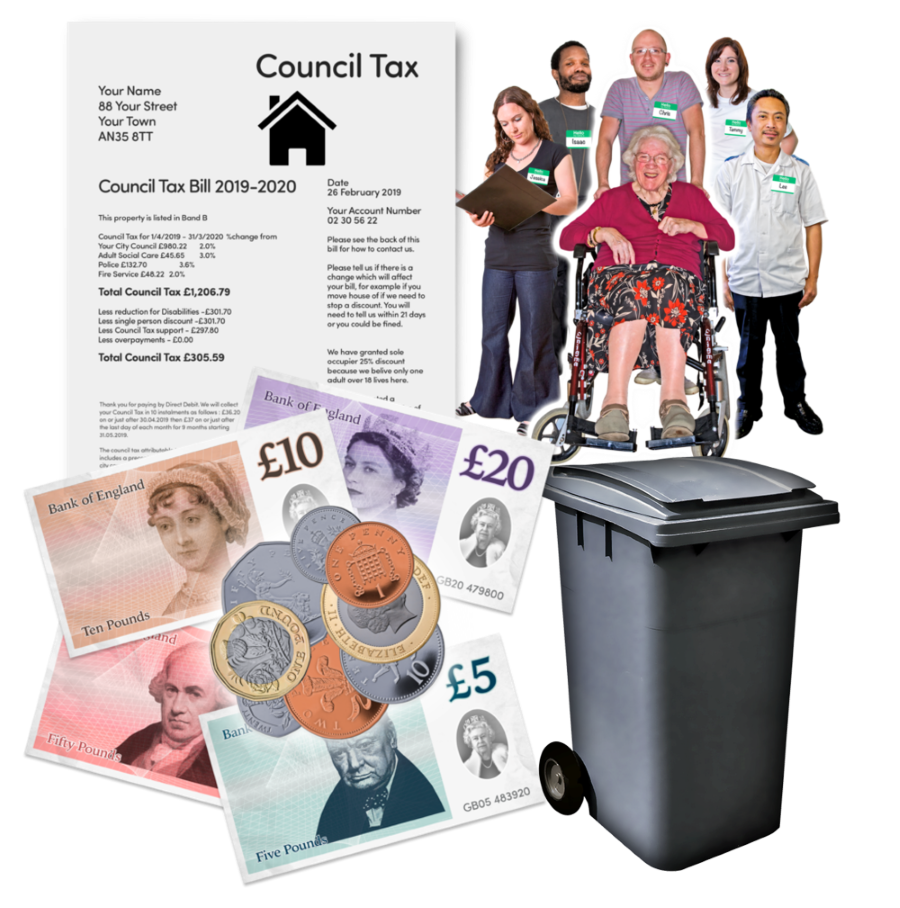 Council
Council
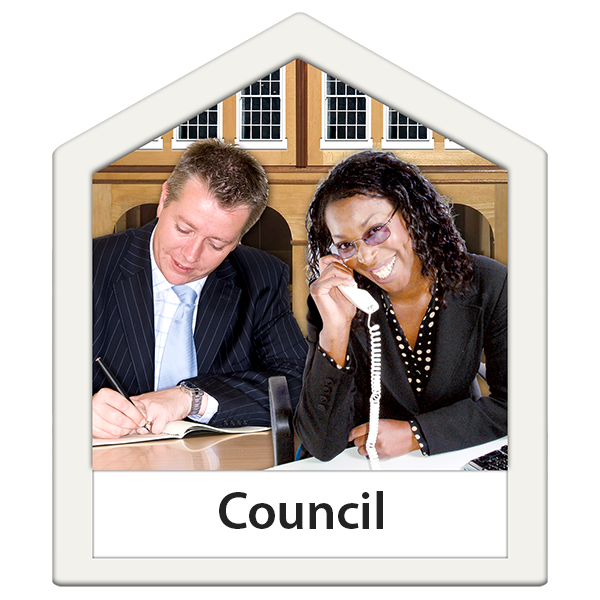 A council is also called a
local authority
A council is also called a
local authority
 A local authority is also called a council. They are a group of people who make decisions about some of the things in the area where you live like schools,
social care
A local authority is also called a council. They are a group of people who make decisions about some of the things in the area where you live like schools,
social care
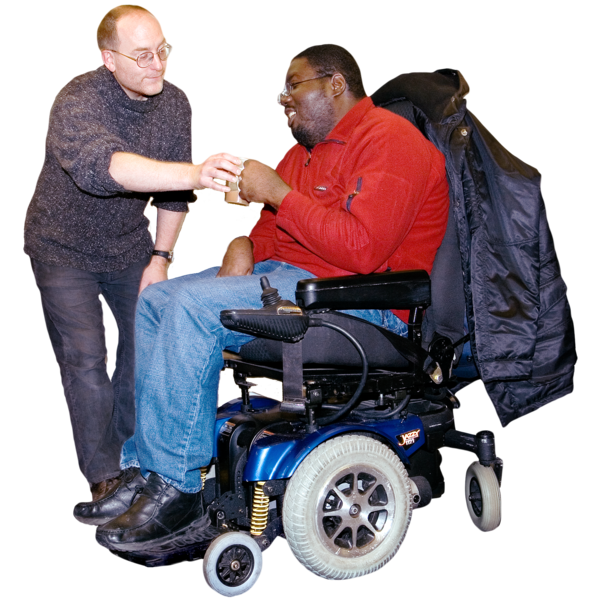 Social care means the services that give care and support to people who need it.
(support for people), parks and dustbin collection.
. They are a group of people who make decisions about some of the things in the area where you live. These include: schools, social care (support for people), parks and dustbin collection.
Tax is the money that people pay to the
council
Social care means the services that give care and support to people who need it.
(support for people), parks and dustbin collection.
. They are a group of people who make decisions about some of the things in the area where you live. These include: schools, social care (support for people), parks and dustbin collection.
Tax is the money that people pay to the
council
 A council is also called a
local authority
A council is also called a
local authority
 A local authority is also called a council. They are a group of people who make decisions about some of the things in the area where you live like schools,
social care
A local authority is also called a council. They are a group of people who make decisions about some of the things in the area where you live like schools,
social care
 Social care means the services that give care and support to people who need it.
(support for people), parks and dustbin collection.
. They are a group of people who make decisions about some of the things in the area where you live. These include: schools, social care (support for people), parks and dustbin collection.
. It helps to pay for things like social care (support for people), parks and dustbin collection.
.
. It is money that is taken out of the money you earn each month. You pay National Insurance so that you can get a pension when you are older.
number on every sheet.
Social care means the services that give care and support to people who need it.
(support for people), parks and dustbin collection.
. They are a group of people who make decisions about some of the things in the area where you live. These include: schools, social care (support for people), parks and dustbin collection.
. It helps to pay for things like social care (support for people), parks and dustbin collection.
.
. It is money that is taken out of the money you earn each month. You pay National Insurance so that you can get a pension when you are older.
number on every sheet.
Before completing your PIP2 form, please read our:
Help answering the questions on the Personal Independence Payment (PIP2) form
Many questions on the form are self-explanatory, however you may find the following
guidance
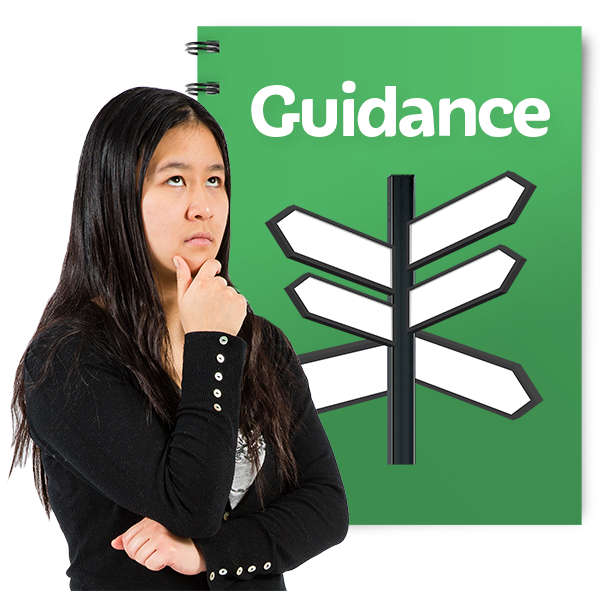 Guidance means being given clear instructions to be able to do something well.
about some of the PIP2 questions helpful:
Guidance means being given clear instructions to be able to do something well.
about some of the PIP2 questions helpful:
Section 1: About your health condition or disability
Question 1:
This section asks about your health condition.
You need to give information about your
learning disability
 A learning disability is to do with the way someone's brain works. It makes it harder for someone to learn, understand or do things.
and other impairments or health conditions you have. You don’t need to describe how your health condition affects you in this section.
A learning disability is to do with the way someone's brain works. It makes it harder for someone to learn, understand or do things.
and other impairments or health conditions you have. You don’t need to describe how your health condition affects you in this section.
Section 2: About your health professionals
Question 2:
This section asks you to list all the professionals who are able to give information on your circumstances.
Think of professionals who can tell how your learning disability affects your ability to carry out PIP activities. These professionals could include anybody, from your doctor to a
social worker
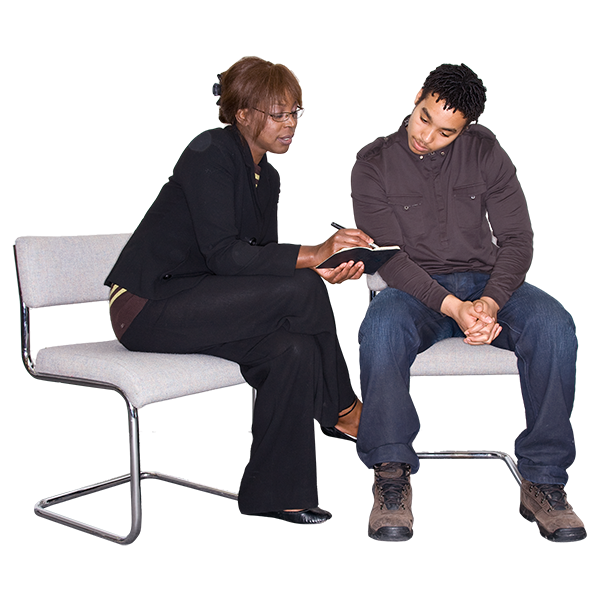 A social worker is someone who can help you get the support you need. Social workers usually work for your local council.
or
support worker
A social worker is someone who can help you get the support you need. Social workers usually work for your local council.
or
support worker
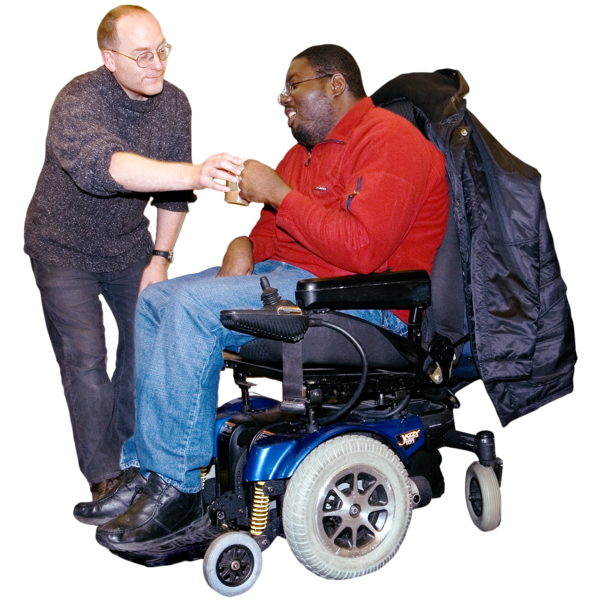 Support workers
Support workers
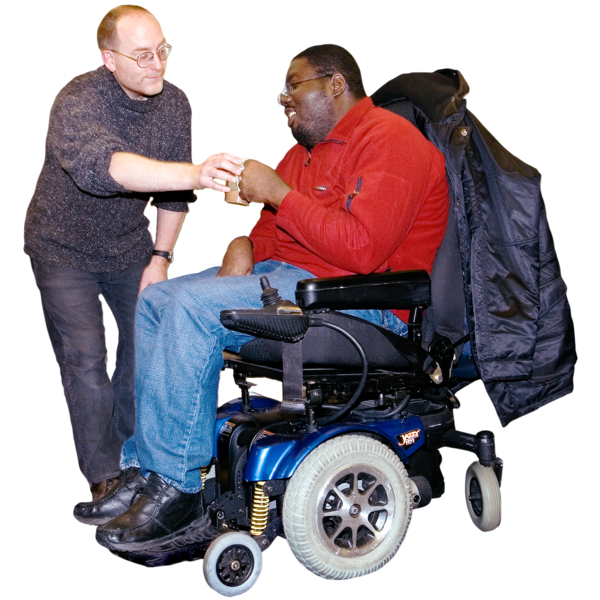 Support workers are people who are paid to give care and support to people who need it.
are people who are paid to give care and support to people who need it.
.
Support workers are people who are paid to give care and support to people who need it.
are people who are paid to give care and support to people who need it.
.
Section 3: How your health condition affects your day-to-day life
Question 3: Preparing food
This question asks about cooking a one course meal using fresh ingredients.
It includes opening packaging, serving food, peeling and chopping food and using a microwave or cooker hob.
People with a learning disability may score some points for this activity.
What the criteria say:
a. Can prepare and cook a simple meal unaided (0 points).
b. Needs to use an aid or appliance to be able to either prepare or cook a simple meal (2 points).
c. Cannot cook a simple meal using a conventional cooker but is able to do so using a microwave (2 points).
d. Needs prompting to be able to either prepare or cook a simple meal (2 points).
e. Needs supervision or assistance to either prepare or cook a simple meal (4 points).
f. Cannot prepare and cook food (8 points).
When answering this question think about:
- aids or appliances you need to use to cook a meal? Those could include:
- a liquid level indicator
- tactile or high contrast colour markings
- talking, large print or tactile timers, scales or measuring jugs
- a talking microwave
- special lighting
- food processors, blenders etc.
- help you need when cooking, such as:
- identifying tins
- telling if food is in date
- telling if food is cooked
- warning you if you get too close to a hot hob
- anything that makes you unsafe when cooking, such as:
- accidentally touching hot pans or hobs
- knocking things over
- spilling hot things onto yourself
- cutting yourself with a knife
- burning food or accidently set fire to things in the kitchen
- using food that is out of date
If you are unable to use a hob, or feel unsafe using a hob, but use a microwave, make sure you say so.
Section 3: How your health condition affects your day-to-day life
Question 4: Eating and drinking
This question is about eating and drinking.
It includes cutting food, getting it to your mouth and chewing and swallowing it. It also includes the use of ‘therapeutic sources’, such as feeding tubes.
Some people with a learning disability may score points for this question.
What the criteria say:
a. Can take nutrition unaided (0 points).
b. Needs:
- to use an aid or appliance to be able to take nutrition
- supervision to be able to take nutrition
- assistance to be able to cut up food. (2 points)
c. Needs a therapeutic source to be able to take nutrition (2 points).
d. Needs prompting to be able to take nutrition (4 points).
e. Needs assistance to be able to manage a therapeutic source to take nutrition (6 points).
f. Cannot convey food and drink to their mouth and needs another person to do so (10 points).
When answering this question think about:
- Aids or appliances you need to use for eating and drinking, such as:
- a plate surround
- a bib
- an easy grip cutlery
- Help you need with eating or drinking, for example:
- assistance to cut up food
- supervision in case you choke
- someone to encourage you to eat different types of food.
Remember to talk about any difficulties you have eating or drinking to an acceptable standard. For example, if you only eat certain types or brands of food if left to your own devices without supervision or support, and which would lead to you becoming malnourished then it is arguable that this is not eating to an acceptable standard.
Section 3: How your health condition affects your day-to-day life
Question 5: Managing your treatments
This question includes taking prescribed medications, other therapies such as physiotherapy exercises, and monitoring changes in health such as measuring blood sugar levels.
What the criteria say:
a. Either:
- does not receive medication or therapy or need to monitor a health condition
- can manage medication or therapy or monitor a health condition unaided. (0 points)
b. Needs either:
- to use an aid or appliance to be able to manage medication
- supervision, prompting or assistance to be able to manage medication or monitor a health condition. (1 point)
c. Needs supervision, prompting or assistance to be able to manage therapy that takes no more than 3.5 hours a week (2 points).
d. Needs supervision, prompting or assistance to be able to manage therapy that takes more than 3.5 but no more than 7 hours a week (4 points).
e. Needs supervision, prompting or assistance to be able to manage therapy that takes more than 7 but no more than 14 hours a week (6 points).
f. Needs supervision, prompting or assistance to be able to manage therapy that takes more than 14 hours a week (8 points). When answering this question think of:
- Aids or appliances you need to use for taking medication or managing therapy, such as:
- a pill organiser or dosette box
- a tactile syringe for measuring medication
- a talking or large print blood sugar monitor
- tactile markings on a peak flow metre
- tactile markings on a medical device such as a home dialysis machine or ventilator
- other similar aid or appliance.
- Help you need to take medication, manage therapy or monitor health condition, such as:
- someone to help you organise tablets
- someone to read labels to you
- someone to give you medication
- help with physio exercises
- someone to read a blood sugar monitor for you
- someone to get help if you have a seizure
- help to set up a home dialysis machine
Remember to talk about anything that may make you unsafe. For example, have you ever taken the wrong medication or the wrong dosage because you couldn’t read the label?
Also remember to talk about anything that means you cannot do it to an acceptable standard. For example, if you make a mess trying to measure out liquid medicines, this may count as not doing it to an acceptable standard.
Section 3: How your health condition affects your day-to-day life
Question 6: Washing and bathing
Question 6 asks about cleaning your body using a standard, unadapted, bath or shower. It is about your physical ability to clean your body. Being unable to read labels on soap or shampoo will not be considered.
What the criteria say:
a. Can wash and bathe unaided (0 points).
b. Needs to use an aid or appliance to be able to wash or bathe (2 points).
c. Needs supervision or prompting to be able to wash or bathe (2 points).
d. Needs assistance to be able to wash either their hair or body below the waist (2 points).
e. Needs assistance to be able to get in or out of a bath or shower (3 points).
f. Needs assistance to be able to wash their body between the shoulders and waist (4 points).
g. Cannot wash and bathe at all and needs another person to wash their entire body (8 points).
When answering this question think of:
- Aids and appliances you need to use to wash or bath, such as:
- grab rails
- a bath or shower seat
- other similar aids or appliances
- Help you need to wash and bath, such as:
- assistance to get in or out of a bath
- supervision in case you fall or have a seizure
Remember to talk about anything that makes you unsafe. For example, poor balance making falls likely.
Section 3: How your health condition affects your day-to-day life
Question 7: Using the toilet and managing incontinence
Question 7 asks about managing toilet needs or incontinence. This is about getting on and off a standard, unadapted, toilet, cleaning yourself afterwards, or managing incontinence. Finding a toilet and getting undressed and dressed are not included in this activity.
What the criteria say:
a. Can manage toilet needs or incontinence unaided (0 points).
b. Needs to use an aid or appliance to be able to manage toilet needs or incontinence (2 points).
c. Needs supervision or prompting to be able to manage toilet needs (2 points).
d. Needs assistance to be able to manage toilet needs (4 points).
e. Needs assistance to be able to manage incontinence of either bladder or bowel (6 points).
f. Needs assistance to be able to manage incontinence of both bladder and bowel (8 points).
When answering the questions think of:
- An aid or appliance you need to us to go to the toilet or manage incontinence, such as:
- grab rails
- a raised toilet seat
- incontinence pads
- a collection device such as a colostomy bag.
- Help you need to go to the toilet or manage incontinence, such as:
- supervision to make sure you don’t fall
- assistance to change a collection bag.
Remember to talk about anything that makes you unsafe, very slow, or unable to do it to an acceptable standard. This could include, for example tending to spill the contents of a collection device.
Section 3: How your health condition affects your day-to-day life
Question 8: Dressing and undressing
Question 8 asks about your ability to put on and take off culturally appropriate, un-adapted clothing that is suitable for the situation.
What the criteria say:
a. Can dress and undress unaided (0 points).
b. Needs to use an aid or appliance to be able to dress or undress (2 points).
c. Needs either:
prompting to be able to dress, undress or determine appropriate circumstances for remaining clothed prompting or assistance to be able to select appropriate clothing (2 points)
d. Needs assistance to be able to dress or undress their lower body (2 points)
e. Needs assistance to be able to dress or undress their upper body (4 points)
f. Cannot dress or undress at all (8 points)
When answering this question think of:
- Aids or appliances you need use to dress or undress. Remember that dressing and undressing includes selecting appropriate clothes. Aids and appliances could include shaped buttons to identify clothes of different colours
- Help you need to dress and undress, this could include:
- someone to tell you what the weather is like and what type of clothing is appropriate for the weather.
- someone to help you select clothes that are clean and matching colours
- someone to help you put clothes on or take them off.
- Remember to talk about anything that makes you unsafe, unable to do it to an acceptable standard, unable to do it as often as you need or that makes you very slow. For example:
- poor balance putting you at risk of falling
- taking a very long time to dress or undress
Section 3: How your health condition affects your day-to-day life
Question 9: Talking, listening and understanding
Question 9 asks about communication.
This can be an important question for people with a learning disability. It is about speaking to other people and hearing and understanding what they are saying.
What the criteria say:
a. Can express and understand verbal information unaided (0 points)
b. Needs to use an aid or appliance to be able to speak or hear (2 points)
c. Needs communication support to be able to express or understand complex verbal information (4 points)
d. Needs communication support to be able to express or understand basic verbal information (8 points)
e. Cannot express or understand verbal information at all even with communication support (12 point)
When answering this question think of:
- Aids or appliances you need to use to communicate with other people such as a hearing aids
- Help you need to communicate, could be someone to repeat what people say to you in simpler language
- If you cannot communicate to an acceptable standard, for example if you often mishear or misunderstand what other people are saying, remember to mention this. You should also describe how your ability to communicate varies depending on the environment you are in and who you communicate with. For example:
-if you are not being able to hear when there is a background noise because you cannot filter out the background noise
-not being understood by others or understanding what others are saying to you
The PIP criteria make a distinction between complex and basic communication. Basic information is a single simple sentence, such as “Can you help me?” Complex communication is more than one sentence or one complicated sentence.
When describing the communication support you need, make sure that you say if you need it for all communication (basic and complex) or just for complex communication.
If communication is exhausting for you, make sure you say so.
Section 3: How your health condition affects your day-to-day life
Question 10: Reading
Question 10 asks about reading.
This can be relevant for people with a learning disability. It is about reading signs, symbols and words in standard print. It includes reading when you are out and about, such as reading bus numbers or road signs, as well as from papers.
To be counted as reading, you have to be doing it by sight. Reading Braille or tactile signs does not count.
What the criteria say:
a. can read and understand basic and complex written information either unaided or using spectacles or contact lenses (0 points)
b. needs to use an aid or appliance, other than spectacles or contact lenses, to be able to read or understand either basic or complex written information (2 points)
c. needs prompting to be able to read or understand complex written information (2 points)
d. needs prompting to be able to read or understand basic written information (4 points)
e. cannot read or understand signs, symbols or words at all (8 points)
When answering the question think of:
- An aid or appliance you use to read signs, symbols and words. This excludes spectacles and contact lenses. It includes things like a magnifier or a scanner to convert printed text to electronic format to read on a computer.
- Help you need to read or understand signs, symbols or words. This could include, for example:
- someone to read printed information to you
- someone to read road signs to you
- someone to read departure boards
- someone to read bus numbers
- someone to explain written information
- The PIP criteria distinguish between basic and complex written information. Basic written information is signs, symbols or date written in standard size print. Complex written information is more than one sentence written in standard size print. Make sure that you say if you need help for both basic and complex information or only for complex information.
You should also consider and mention:
- your reading speed, if you read slowly
- how your ability to read varies in different environments,
- if you feel uncomfortable when reading.
Section 3: How your health condition affects your day-to-day life
Question 11: Mixing with other people
Question 11 asks about engaging with other people.
It is about interacting with other people face-to-face in a contextually and socially appropriate manner, understand body language and establishing
relationships
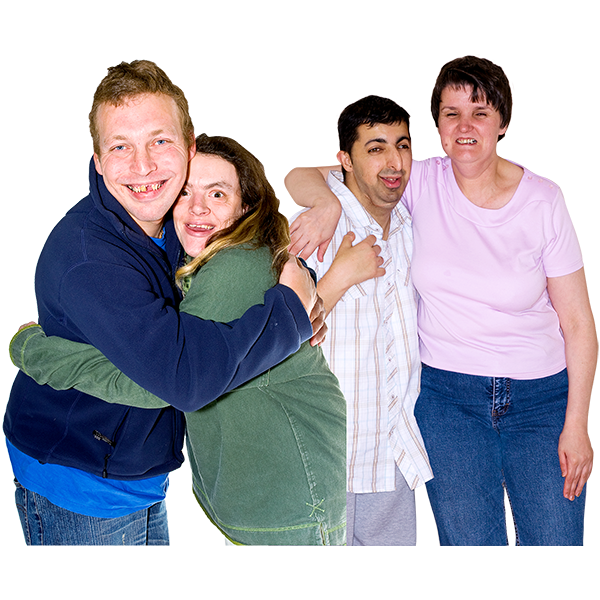 Relationships are about the people in your life. You might have different types of relationships like friendships, family relationships, or a boyfriend or girlfriend.
. This can be an important descriptor for people with learning disabilities.
Relationships are about the people in your life. You might have different types of relationships like friendships, family relationships, or a boyfriend or girlfriend.
. This can be an important descriptor for people with learning disabilities.
What the criteria say:
a. Can engage with other people unaided (0 points)
b. Needs prompting to be able to engage with other people (2 points)
c. Needs social support to be able to engage with other people (4 points)
d. Cannot engage with other people due to such engagement causing either
- overwhelming psychological distress to the claimant
- the claimant to exhibit behaviour which would result in a substantial risk of harm to the claimant or another person
(8 points)
When answering the question think of the help you need to mix with other people, such as:
- someone encouraging or prompting you to socialise
- someone to introduce you to other people in the room because you don’t recognise them
- someone to help you to interpret what people are saying, explaining jokes etc. and describing what people mean by their body language and helping you to use appropriate verbal and non-verbal language.
Section 3: How your health condition affects your day-to-day life
Question 12: Managing money
Question 12 asks about making budgeting decisions.
This includes basic decisions such as how much change you should get in a shop, and complex decisions such as managing a household budget and paying bills.
This activity can also be very relevant for people with a learning disability.
What the criteria say:
a. Can manage complex budgeting decisions unaided (0 points)
b. Needs prompting or assistance to be able to make complex budgeting decisions (2 points)
c. Needs prompting or assistance to be able to make simple budgeting decisions (4 points)
d. Cannot make any budgeting decisions at all (6 points)
When answering this question think of the help you need, this could include:
- someone to help you make the calculation
- someone to make the calculation for you
- someone reminding you to pay a bill
- someone making sure that you do not spend all your money on ‘luxuries’ leaving you with not enough money to pay for essentials such as food and bills.
The PIP criteria distinguish between basic budgeting decisions, such as knowing how much change you should expect to receive from a simple transaction, and complex budgeting decisions, such as making sure you have enough money to pay your bills.
Section 3: How your health condition affects your day-to-day life
Question 13: Planning and following a journey
Question 13 asks about planning and following a local journey.
This can be an important question for people with a learning disability. Following a route of a journey includes coping with unexpected changes, such as road works and bus stop closures.
What the criteria say:
a. Can plan and follow the route of a journey unaided (0 points)
b. Needs prompting to be able to undertake any journey to avoid overwhelming psychological distress to the claimant (4 points)
c. Cannot plan the route of a journey (8 points)
d. Cannot follow the route of an unfamiliar journey without another person, assistance dog, or orientation aid (10 points)
e. Cannot undertake any journey because it would cause overwhelming psychological distress to the claimant (10 points)
f. Cannot follow the route of a familiar journey without another person, an assistance dog or an orientation aid (12 points)
When answering this question think of specialist aids you use to go to a place that is familiar to you or a place that is not familiar to you, those could include:
- a long cane or guide dog
- an electronic travel aid
- a specialist GPS system.
Help you need to go to a place you know well and help you need to get to a place you don’t know. This could include help to:
- keep you safe or stop you getting lost
- deal with public transport
- deal with unexpected circumstances
- find out timetable information
- find the platform
- identify the right train or bus
- cross the road
- avoid obstacles
- find your way after getting lost
The PIP criteria make a distinction between familiar and unfamiliar journeys. Unfamiliar journeys are journeys that you do not know and include the use of public transport. So, if you can do familiar journeys on your own and without any aids but need an aid or somebody with you on unfamiliar journeys, make sure you say so.
Think whether you could follow the route of a journey reliably, as well as:
- how safe you are when travelling, can you safely cross roads?
- does it take you much longer compared to other people to get where you want to be?
- do you often get lost and what happens when you get lost?
- can you ask someone for directions?
- would you be able to understand what they are telling you and follow those directions?
- can you cope with unexpected changes, such as road works or train cancellations?
Section 3: How your health condition affects your day-to-day life
Question 14: Moving around
Question 14 asks about how far you can walk.
This is only about physically being able to walk. Awareness of danger and finding your way is not counted here.
What the criteria say:
a. Can stand and then move more than 200 metres, either aided or unaided (0 points)
b. Can stand and then move more than 50 metres but no more than 200 metres, either aided or unaided (4 points)
c. Can stand and then move unaided more than 20 metres but no more than 50 metres (8 points)
d. Can stand and then move using an aid or appliance more than 20 metres but no more than 50 metres (10 points)
e. Can stand and then move more than 1 metre but no more than 20 metres, either aided or unaided (12 points)
f. Cannot, either aided or unaided:
- stand
- move more than 1 metre (12 points)
When answering this question think of:
- Aids or appliances you use when walking, for example:
- a walking stick
- crutches
- a walking frame
- prostheses
- wheelchair.
- How far can you walk and what difficulties you have when walking, for example:
- poor balance putting you at risk of falling
- walking exhausting you
- walking very slowly
- feeling pain when walking.
Section 4: What happens next
Attending an assessment with a health professional
This part of the form is about the help you would need if you were asked to have a face-to-face
assessment
 An assessment is a way of finding out what help a person needs. When you have an assessment, you might have to go to a meeting or fill in a form.
.
An assessment is a way of finding out what help a person needs. When you have an assessment, you might have to go to a meeting or fill in a form.
.
Not everyone will be invited to a face-to-face assessment, but it is important to fill in this section to ensure you get the support you need during the assessment.
Face-to-face assessments may take place at an assessment centre or in your home. Some people prefer to go to an assessment centre, as they think they may appear more able then they actually are in the environment that is really familiar to them, such as their home.
If you need a face-to-face assessment to take place in your home, you need to justify this on the basis of your impairments or health conditions. You are more likely to have a home
consultation
 Consultation is finding out what people think about something.
if you can show that you need ‘high levels of support’ in order to travel. Assessment providers can suggest that you travel by taxi, so if you will find it difficult to use a taxi, for example because you cannot communicate with a driver, you need to explain this.
Consultation is finding out what people think about something.
if you can show that you need ‘high levels of support’ in order to travel. Assessment providers can suggest that you travel by taxi, so if you will find it difficult to use a taxi, for example because you cannot communicate with a driver, you need to explain this.
Frequently asked questions when filling out the PIP2 application form
What evidence do I need to send with my PIP2 form?
The evidence you send with your form could include:
- letters or reports from health professionals, such as psychologists, speech and language therapists, an occupational therapist or anyone else who can help to demonstrate the impact of your condition
- letters or reports from social care professionals, such as care plans or assessment reports
- written statements from carers or professionals involved in supporting you, such as care workers, detailing how they work with you and how in their view your disability affects your ability to do the day-to-day activities.
The more evidence you are able to provide the better.
What does the PIP2 form mean when it asks about my ability to do an activity?
To be considered able to do an activity, you must be able to do it:
- safely – in a way that is unlikely to cause you or anyone else harm during or after the activity
- to an acceptable standard
- in a reasonable period of time – taking no more than twice the time it would take a non-disabled person
- repeatedly (as often as you need).
For example, if you can do an activity, such as cooking a meal, but are unsafe doing it, you should be considered unable to do it for the purposes of PIP. On the form you must explain why you are unsafe doing it.
You should think about how your ability to do something varies in different environments, different times of the day or from day to day.
If you could make you way down a street in the middle of the day when nobody is around, but would struggle to do it during rush hour because you cannot cope with busy environments due to the noise and number of people, you should be considered unable to do it. Do not forget to think about this for each question and explain how your ability to do something changes.
If an impairment or health condition is different from day to day, you need to describe how it changes, what it’s like on your better and worse days, and how frequently you need each kind of help or aid you use.
What are aids and appliances?
Aids and appliances are anything that improves, provides or replaces mental or physical function.
It includes specialised disability related equipment such as hearing aids or magnifiers. It also includes everyday items that anyone could use if you use them because of your impairment. For example, using a dosette box to store medication because you have difficulty remembering what to take and when, and you struggle to remember if you have already taken your medication.
Aids or appliances will be taken into account if either:
- you need to use them to carry out an activity
- the assessor thinks you could reasonably be expected to use them even if you don’t.
If you use an aid or appliance, explain how it helps you and what the limitations are. If you choose to use an aid or appliance, but can actually manage without it, it won’t be taken into account.
Do I need to justify my need for help?
For most activities, you will score more points for needing help from another person rather than using an aid or appliance.
Assessors and case managers may try to argue that you could use an aid or appliance instead of using help from another person. If you do need help from another person, try to explain why you need it and why an aid or appliance wouldn’t work for you.
If you do not currently get help but would benefit from it, you may still be counted as needing help.
Do I need to use specialist language when completing the PIP2 form?
Health professionals may not know much about learning disabilities, so explain as much as possible and don’t use specialist or overcomplicated language.
Where can I find more information about completing the PIP2 form?
For more details about completing the PIP application form visit the government
website
 A website is a page you can go to on the internet like Google or YouTube.
for their latest PIP handbook.
A website is a page you can go to on the internet like Google or YouTube.
for their latest PIP handbook.
The information on this page is for guidance only. Mencap hold no responsibility for DWP processes, timescales, decisions and service.

